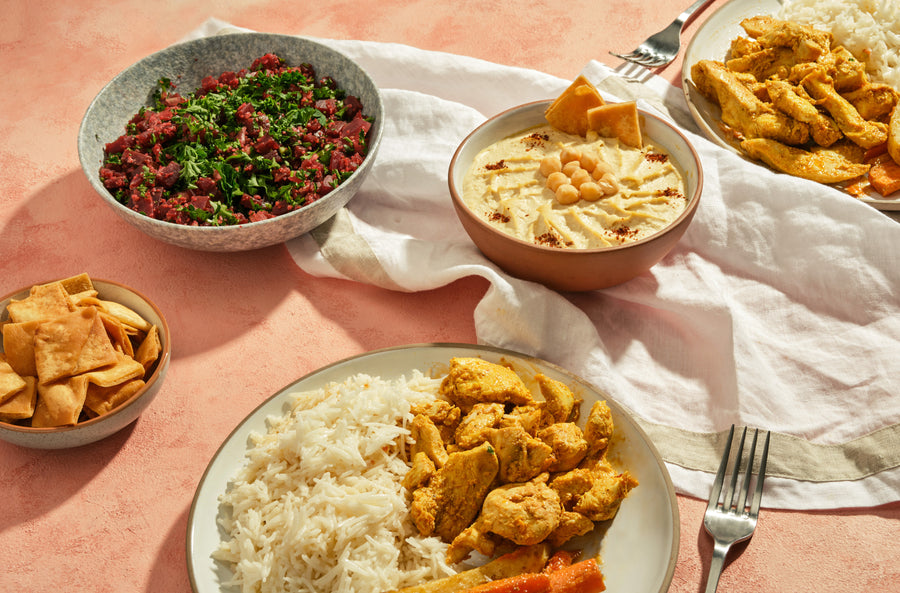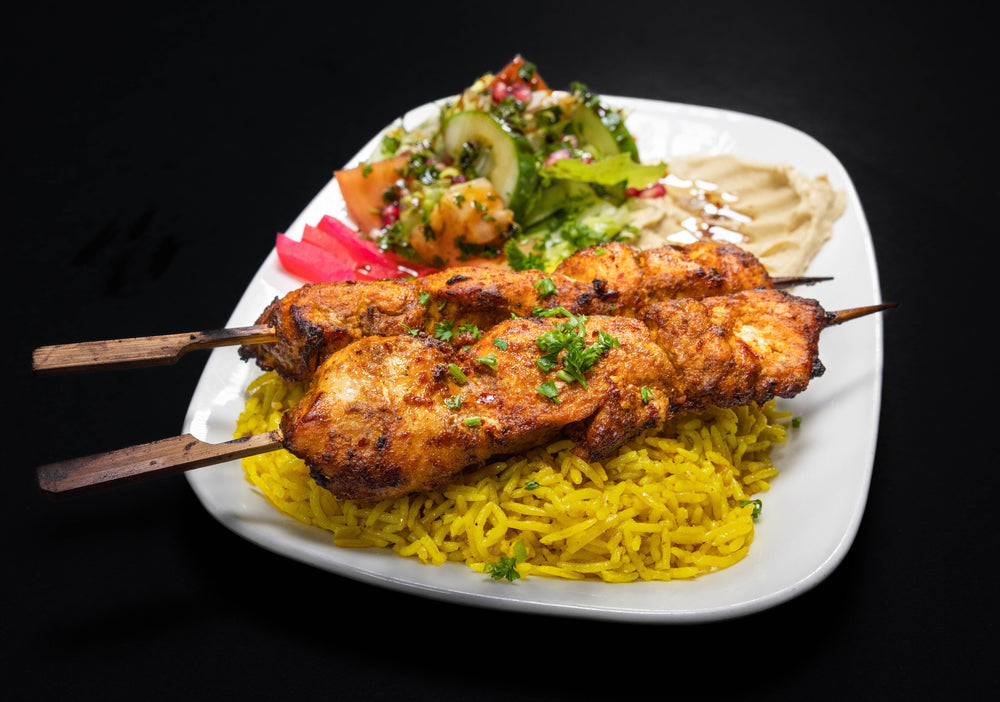Brunch Kitsilano Vancouver BC: A Local’s Perspective on Weekend Rituals
All Regarding the Rich Flavors and Traditions of Syrian Food: A Culinary Trip
Syrian cuisine uses a special mix of flavors and traditions that mirror its abundant cultural history. With staple ingredients like olive oil and garlic, alongside a selection of spices, the recipes are both diverse and inviting. From the elaborate prep work of kibbeh to the sweet appeal of baklava, each facet of this cooking landscape exposes deeper stories. As one checks out the essence of these flavors, a higher understanding of common dining and celebration arises.
The Significance of Syrian Ingredients
The essence of Syrian active ingredients hinges on their rich diversity and deep-rooted cultural relevance. Influenced by the country's different location and background, Syrian food incorporates a large selection of seasonings, herbs, and fresh produce. Staples such as olive oil, garlic, and lemon give a foundation, while seasonings like coriander, cumin, and sumac add deepness and intricacy to dishes.The use of fresh herbs, including parsley and mint, highlights the importance of seasonal components. In addition, the region's productive dirt returns an abundance of fruits and vegetables, such as eggplants, tomatoes, and pomegranates, which are essential to numerous dishes. Grains like bulgur and rice develop the base of lots of meals, emphasizing the significance of these active ingredients in Syrian culture. This blend of tastes reflects not just a cooking custom however also a tapestry of historic influences, making Syrian active ingredients vital to comprehending its cuisine's vivid personality.

Iconic Dishes of Syrian Food
Syrian food is renowned for its renowned dishes that showcase a rich tapestry of flavors and structures. Traditional meze plates provide a range of little recipes that tantalize the taste buds, while hearty major programs provide rewarding focal points for meals (Afternoon Tea Vancouver). To complete the experience, a selection of scrumptious desserts adds a sweet note to the cooking journey
Standard Meze Plates

Hearty Main Courses
Passionate primary courses function as the centerpiece of Syrian dining, showcasing a blend of flavors that reflect the country's abundant culinary traditions. Recipes such as kebab hindi, including marinaded lamb skewers, and the renowned mujaddara, a calming mix of lentils and rice, highlight using aromatic flavors and fresh active ingredients. One more staple is the iconic kibbeh, made from bulgur wheat and minced meat, commonly served in various forms, consisting of baked, deep-fried, or raw. Furthermore, the flavors of the land come active in recipes like packed veggies, called mahshi, which are loaded with rice, meat, and natural herbs. These main dishes not just satisfy hunger but likewise inform stories of household celebrations and cultural heritage.
Delightful Treats Selection
A fascinating variety of desserts specifies the sweet side of Syrian food, using a tantalizing end to any kind of dish. Amongst the most popular confections are baklava, fragile layers of phyllo pastry loaded with nuts and soaked in syrup, and maamoul, shortbread-like cookies usually packed with days or nuts. Knafeh, a rich dessert made from slim noodle-like bread soaked in syrup and split with cheese, is a prominent option, specifically during joyful events. In addition, the sweet and great smelling rice dessert, recognized as roz bil laban, supplies a calming surface. These mouth-watering desserts not only showcase the area's cooking proficiency but additionally mirror the social heritage of Syria, making them valued treats in both homes and restaurants alike.
Traditional Cooking Methods
Contemporary eases have actually affected numerous culinary practices, traditional food preparation methods continue to be essential to Syrian food. These approaches frequently stress using fresh, seasonal components and concentrate on slow cooking to establish rich flavors. Strategies such as grilling, braising, and stewing prevail, permitting the all-natural tastes of the active ingredients to shine through.One noteworthy strategy is the prep work of kibbeh, a meal made from carefully ground meat and bulgur. It requires experienced hand-rolling right into various shapes and can be baked, fried, or served raw. Furthermore, the art of making bread, especially pita, is main to many meals, often cooked in a traditional rock oven.Preservation methods like pickling and fermenting likewise play a crucial function, improving the variety of flavors located in Syrian recipes. These methods not only show the area's farming heritage but additionally promote a solid sense of neighborhood through shared culinary techniques.

The Function of Spices in Flavor
Flavors offer as the heart beat of Syrian cuisine, infusing recipes with complex tastes and aromatic depth. Each spice plays an essential function, adding not only to taste yet also to the cultural heritage of the area. Frequently used seasonings include coriander, cumin, and sumac, each providing an unique profile that elevates conventional dishes. For example, cumin provides warmth and earthiness, while sumac includes an appetizing brightness, boosting the total dish.Syrian chefs often mix spices to create unified accounts, showing the detailed equilibrium of tastes that define the food. Using flavors is not just for flavoring; it likewise offers to protect food and improve its nutritional value. This thoughtful consolidation highlights a deep understanding of the cooking arts, where seasonings come to be essential authors, communicating the abundant history and diverse influences that characterize Syrian gastronomy. Ultimately, spices are important in crafting genuine and unforgettable Syrian recipes.
Cheery personalizeds and celebratory dishes
Celebratory meals in Syrian cuisine are noted by traditional feast dishes that reflect the nation's rich cooking heritage. Unique occasions commonly involve distinct rituals that improve the communal experience of eating. These custom-mades not only honor the significance of the events but likewise enhance familial and cultural bonds.
Typical Banquet Cuisines
When family members gather to celebrate significant celebrations in Syria, standard banquet meals take facility phase, showcasing the abundant cooking heritage of the region. These events often feature vibrant plates of mezze, consisting of hummus, baba ghanoush, and tabbouleh, which serve as wonderful starters. The main dish normally highlights lamb or hen, marinaded and cooked to perfection, usually come with by aromatic rice pilaf or bulgur. Among one of the most beloved dishes is maqlooba, a split rice dish with veggies and meat, flipped upside down before offering. Desserts likewise play a crucial function, with baklava and knafeh supplying a pleasant surface to the meal. Each meal not only thrills the palate but likewise reflects the ingrained visit site practices and common spirit of Syrian society.
Unique Occasion Routines
Special celebrations in Syria are noted by abundant routines that link food and festivity, mirroring the cultural importance of communal celebrations. Commemorative dishes commonly consist of conventional dishes such as kibbeh, tabbouleh, and numerous barbequed meats, prepared with treatment and shared amongst family and buddies. During spiritual holidays like Eid al-Fitr and Eid al-Adha, families integrated to prepare unique sugary foods like maamoul, signifying unity and delight. Wedding events are especially intricate, including multiple courses and vibrant displays of friendliness. These occasions are not merely concerning food; they encompass dance, storytelling, and music, reinforcing social bonds and social heritage. Via these routines, Syrians celebrate life's turning points, making sure practices are passed down with generations, enriching their cooking landscape.
The Importance of Sharing and Community
Sharing meals is a basic facet of Syrian society, reflecting the deep-rooted worths of neighborhood and connection. In Syria, food is not just nutrition but a way of bringing people together. Friends and families gather around the table to appreciate conventional dishes, cultivating bonds and creating enduring memories. This click common eating experience emphasizes friendliness, where hosts most likely to wonderful lengths to ensure every guest really feels welcomed and nourished.The act of sharing food also symbolizes kindness and solidarity, enhancing social connections within areas and larger neighborhoods. Throughout gatherings, it is usual for individuals to serve each various other, showcasing a spirit of togetherness that transcends individualism. Events, whether huge or tiny, are commonly noted by the sharing of meals, where varied flavors and recipes integrated, showing the abundant tapestry of Syrian culture. Appropriately, the importance of sharing and neighborhood in Syrian food is not only a cooking custom yet a crucial social technique.
A Cooking Expedition of Syrian Desserts
Although typically eclipsed by savory recipes, Syrian desserts hold a valued location in the country's culinary heritage. These confections mirror the area's abundant background, mixing tastes and strategies from numerous cultures. Standard desserts like baklava, with its layers of phyllo pastry, nuts, and honey syrup, display the creativity associated with Syrian cooking. Ma'amoul, a shortbread-like cookie filled up with nuts or dates, is commonly planned for joyful occasions, signifying hospitality and celebration.Another beloved wonderful is Knafeh, a bread soaked in syrup and split with cheese or cream, providing a wonderful comparison of structures. Syrians likewise enjoy a variety of fruit syrups and maintains, typically offered with tea or as component of a larger spread throughout events. These sweets not only please the palate however likewise function as a bridge in between generations, protecting the customs and stories of Syrian culture through each delightful bite
Often Asked Concerns
What Are the Health And Wellness Benefits of Conventional Syrian Foods?
The health and wellness benefits of traditional Syrian foods include rich nutrients from fresh veggies, legumes, and entire grains. These components advertise heart health, improve food digestion, and offer necessary vitamins, adding to general health and a balanced diet regimen.
Exactly How Has Syrian Cuisine Developed Throughout The Years?
Syrian food has progressed substantially, influenced by historical trade routes, cultural exchanges, and local schedule of ingredients. Traditional recipes have integrated modern-day tastes and techniques while keeping their abundant heritage, reflecting a varied cooking landscape.
Are There Vegetarian or Vegan Options in Syrian Food?
Syrian cuisine uses countless vegetarian and vegan options, including dishes like falafel, tabbouleh, and stuffed grape leaves. These dishes highlight the area's abundant agricultural heritage, showcasing fresh vegetables, grains, and aromatic flavors in lively mixes.
What Beverages Set Well With Syrian Recipes?
When considering beverages that complement Syrian meals, one may discover that mint ayran, tea, and pomegranate juice enhance the dish's tastes. Furthermore, red a glass of wine frequently sets well with the flavors generally discovered in these foods.
Exactly How Can I Recreate Syrian Dishes in your home?
To recreate Syrian dishes in the house, one must explore authentic recipes, gather navigate to these guys conventional ingredients, and utilize food preparation methods unique to the food. Trying out seasonings and presentation additionally boosts the total eating experience. Syrian food is renowned for its famous dishes that showcase a rich tapestry of tastes and textures. Spices serve as the heart beat of Syrian food, infusing recipes with intricate tastes and fragrant depth. Commemorative dishes in Syrian food are noted by typical feast recipes that mirror the country's abundant culinary heritage. Parties, whether huge or tiny, are commonly marked by the sharing of dishes, where diverse flavors and meals come with each other, mirroring the abundant tapestry of Syrian society. Syrian food uses countless vegetarian and vegan alternatives, featuring recipes like falafel, tabbouleh, and stuffed grape leaves.